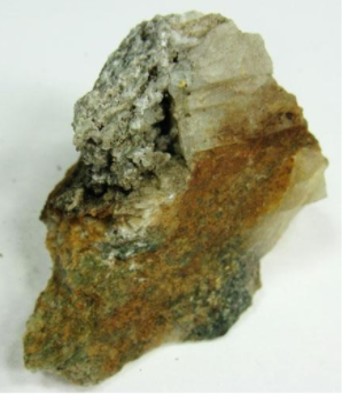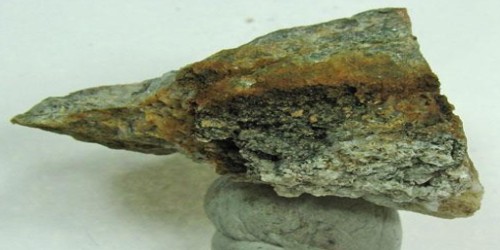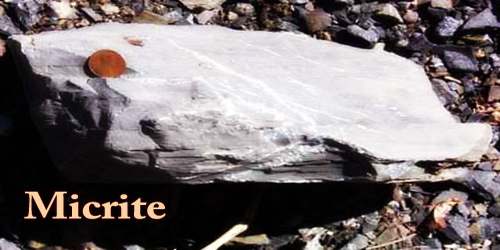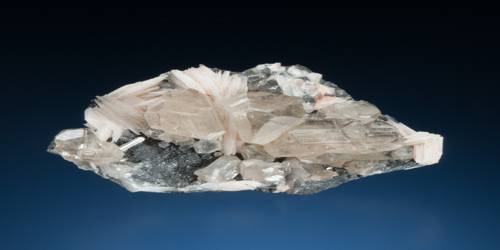Raslakite is a rare mineral of the eudialyte group with the formula Na15 Ca3Fe3(Na,Zr)3Zr3(Si,Nb)SiO(Si9O27)2(Si3O9)2(OH,H2O)3(Cl,OH). It is a trigonal-ditrigonal pyramidal brownish-red mineral containing calcium, chlorine, hydrogen, iron, niobium, oxygen, silicon, sodium, and zirconium. It was named after Raslak Cirques located nearby the type locality. It occurs in an agpaitic pegmatite in an alkaline igneous complex.
This formula is based on the original one and is extended to show the presence of cyclic silicate groups. The additional silicon and oxygen shown in separation from the cyclic groups (in parentheses) are in fact connected with two 9-fold rings.
General Information
- Category: Silicate mineral, Cyclosilicate
- Formula: Ca3Fe3(Na,Zr)3Zr3(Si,Nb)SiO(Si9O27)2(Si3O9)2(OH,H2O)3(Cl,OH)
- Crystal system: Trigonal
- Crystal class: Pyramidal (3)

Properties
Beside main elements given in the formula, raslakite contains some potassium, strontium, manganese, magnesium, cerium, titanium, and aluminum, with minor amounts of lanthanum and hafnium.
- Color: Brownish-red
- Crystal habit: Grains
- Cleavage: Imperfect
- Fracture: Conchoidal
- Tenacity: Brittle
- Mohs scale hardness: 5
- Luster: Vitreous
- Streak: White
- Diaphaneity: Transparent
- Density: 2.95 g/cm3 (measured)
Occurrence and association
Raslakite was discovered, together with ikranite, in peralkaline pegmatites of the Mt. Karnasurt, Lovozero massif, Kola Peninsula, Russia. Raslakite is associated with aegirine, fluorcaphite, kazakovite, lamprophyllite, microcline, nepheline, and terskite.
Information Source:
















